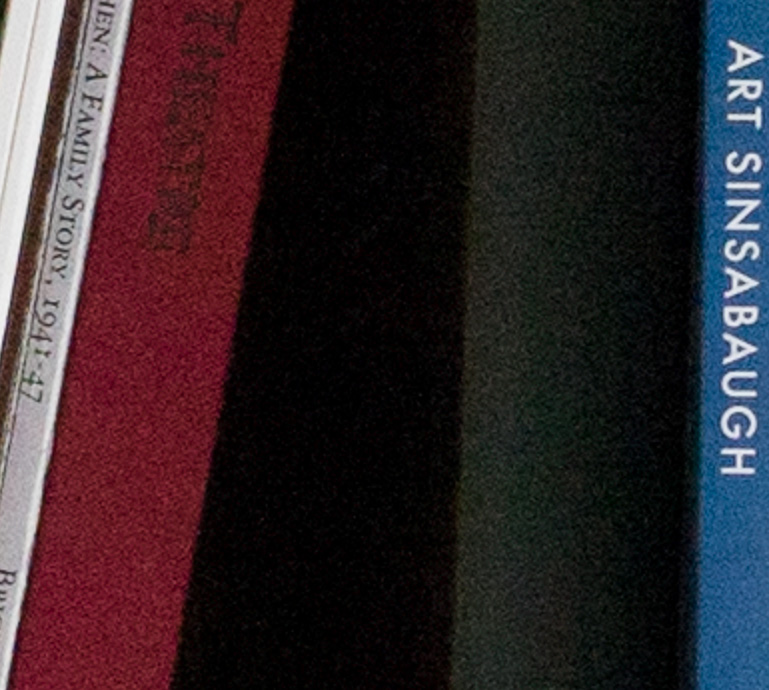We have seen from the graphs that the Sony a7II is pretty “ISO-less”. When I get a camera like that, I usually demonstrate the point with some real pictures.
I put the 55mm Zony f/1.8 on the camera, mounted the camera to the RRS generic plate (the L-bracket isn’t yet available), the bracket to a Arca-Swiss head, the head to aRRS tripod, aimed the camera at the bookcase I usually use for this test, set the f-stop to f/5.6, the shutter to 1/13 second, the ISO to 3200, the self-timer to 2 seconds, and, using single shot autofocus, made an exposure which showed a nice ETTRish histogram. Varying nothing but the ISO setting, I made five more exposures at ISO 1600, 800, 400, 200, and 100.
I developed the images in Lightroom 5.7.1 with default settings except for the same custom white balance for all the images. Then I set the Exposure control on the ISO 100 image to an extra +5, the Exposure control on the ISO 200 image to an extra +4, the Exposure control on the ISO 400 image to an extra +3, the Exposure control on the ISO 800 image to an extra +2, the Exposure control on the ISO 1600 image to an extra +1, and didn’t adjust the Exposure of the ISO 3200 image.
The images:






What do the shadows look like? Here they are at 200%:






And that’s what ISOlessness looks like.
Jim, I did exact the same test some weeks ago and had similar results. No surprises. However I noticed that the color of the image changes gradually with increasing “underexposure”. The image gets warmer / more yellow which cannot be corrected completely with a new white balance setting. Your ISO 100 image also seems more yellow. What is going on here?
Bert
Bert,
I suspect a black point error. I have noticed that the black point changes from its nominal value of 512 slightly with ISO in the a7II (and the a7S, but I haven’t looked at the other alpha 7 cameras). If the raw processor has the wrong black point, then the color balance can be off. The ugly exemplar for this is the Leica M240, which not only changes black point with ISO, but subtracts off the black point before writing the raw files, giving rise to the “green shadows” problem, which requires a special app to fix.
I consider the Sony color shift minor, however. I’ll bet you wouldn’t have noticed it if I’d have white balanced each image separately.
Jim
Can you please compare A7 and A7 II in terms of push processing? DXO showed that A7 II has lower DR like 0.5 stop…. I really would like to see the difference in real world samples…Thanks!!!!
I’m sorry, but my a7 has been modified for infrared.
That’s bad for us then :/